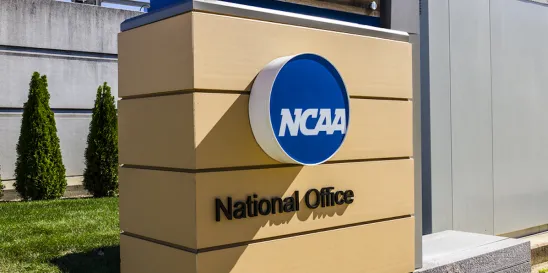NCAA President Charlie Baker has advanced the idea of giving universities and colleges (with the most-resourced athletic departments) the option to pay student-athletes. The emergence of national, image, and likeness (NIL) deals are exerting increasing influence on the landscape of collegiate athletics (and growing the disparities between the have and have-nots of college universities). In a stunning move, the NCAA sent a letter to more than 350 college and universities presenting rule changes to allow member schools to enter into NIL deals directly with their student-athletes. The NCAA proposes to create a new subdivision, covering all sports, where the richest athletic departments can operate differently than the rest, while still competing with the rest of Division I universities.
Although not fully fleshed out yet, the proposed subdivision would follow certain parameters:
- To be a part of that subdivision, each school would have to put millions of dollars.
each year into a trust fund for athletes. The schools would be required to set aside a minimum of $30,000 per athlete for at least half of their athletes annually. - The trust fund would not be tethered to educational resources and there would be no cap on the funds provided to the trust fund. An athlete would not need to finish their degree before they access that money.
- The subdivision will create its own set of rules for recruiting, transfers, roster size,
and a wide range of other policies. - The subdivision would have to continue to follow Title IX rules and allocate 50
percent of the investment toward women’s sports. - The member schools would have to vote to adopt the changes. The schools would be allowed to determine whether to opt in or out individually.
Broader Implications
The proposal allows certain Division I athletes to be paid directly through a trust fund. If the member schools adopt this model, the practice of compensating student-athletes seemingly will bolster the National Labor Relations Board’s expressed position that student-athletes are statutory employees. In May 2023, the Board filed a complaint against the University of Southern California, the Pac-12 Conference, and the NCAA, alleging their failure to use the term “employee” to refer to student-athletes in the university’s student-athlete handbook and related social media policies intentionally discourages student-athletes from exercising their alleged Section 7 rights as employees under the National Labor Relations Act, particularly the right to organize a union, join a union, or engage in protected concerted activity, among other rights. In light of this new proposal, combined with ongoing litigation to classify college athletes as statutory employees of their university for purposes of protections under labor laws, reform is a afoot in college athletics, so universities and college should consider taking steps now to educate and protect themselves against unfair labor practice charges.



 />i
/>i

